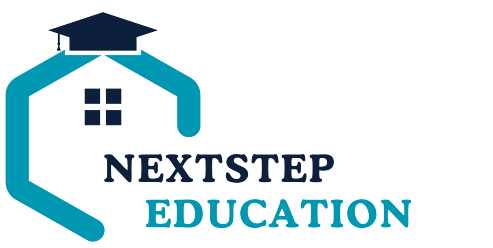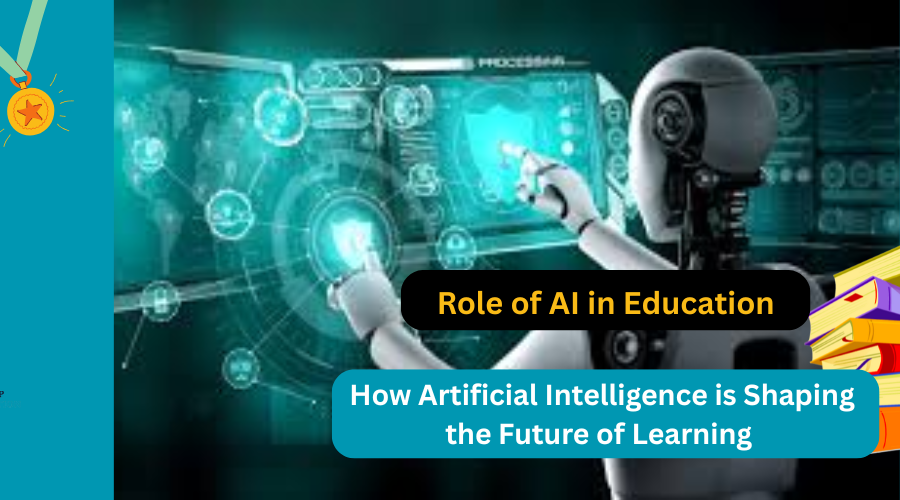Artificial Intelligence (AI) is rapidly transforming every industry, and education is no exception. As schools and universities worldwide adopt AI-powered tools, the classroom is evolving into a more personalized, efficient, and engaging learning environment. Whether it’s an AI chatbot helping students with doubts or predictive analytics identifying who needs extra support, the impact of AI on education is undeniable.
Understanding the future of AI in education isn’t just important for tech enthusiasts — it’s essential for parents choosing the best schools, educators preparing students for tomorrow’s world, and students themselves, who need to be ready for an AI-driven future.
In this blog, we’ll explore what AI means in education, how it’s changing teaching and learning, the benefits it offers, the challenges it presents, and how schools can prepare students for success in the era of artificial intelligence.
What is AI in Education?
Artificial Intelligence in education refers to the use of advanced computer algorithms and machine learning techniques to create systems that can perform tasks typically requiring human intelligence. In the context of schools and universities, AI systems can analyze student data, provide personalized learning pathways, assist teachers with administrative work, and even interact with students through virtual assistants.
For example, AI in teaching and learning includes platforms that adapt to each student’s pace and understanding, offering customized exercises and resources. AI can also power chatbots that answer students’ questions instantly, or grading systems that evaluate assignments quickly and consistently.
By automating routine tasks and enabling personalized education, artificial intelligence in classrooms is helping educators focus more on creativity, mentorship, and fostering critical thinking skills in students.
Key Ways AI is Transforming Teaching and Learning
AI is not just an add-on to education; it’s reshaping how knowledge is delivered, understood, and assessed. Here are some of the most impactful ways AI is changing the educational experience today:
Personalized Learning Platforms
AI algorithms can assess each student’s strengths, weaknesses, and learning pace to tailor lesson plans and exercises. These adaptive learning systems ensure that every student receives the right level of challenge and support, helping them master concepts more effectively. This is one of the clearest examples of the impact of AI on education — transforming one-size-fits-all classrooms into personalized learning environments.
Virtual Teaching Assistants and Chatbots
AI-powered chatbots can answer students’ common questions anytime, reducing the burden on teachers and keeping learning accessible outside class hours. Virtual teaching assistants can send reminders about assignments, provide study tips, and guide students through complex topics. These tools make learning more interactive and responsive.
Automated Grading and Feedback
AI can grade multiple-choice tests, essays, and even programming assignments quickly and fairly, freeing up teachers to spend more time on lesson planning and student support. Automated grading also provides instant feedback to students, helping them understand their mistakes and improve faster.
Predictive Analytics for Early Intervention
AI-powered systems can analyze attendance, test scores, participation, and behavioral patterns to identify students at risk of falling behind. Teachers and parents can then intervene earlier with additional support. This predictive ability is a powerful way AI is changing education for the better.
Language Translation and Accessibility Tools
AI-driven translation and speech recognition tools can help students who speak different languages or have special needs. This makes classrooms more inclusive and supports equal learning opportunities for all.
These innovations demonstrate why AI is becoming an essential part of modern education, creating more engaging, personalized, and efficient learning experiences for students worldwide.
Benefits of AI in Education
Artificial intelligence brings a host of advantages to education, fundamentally changing how students learn and how educators teach. Here are some of the key benefits of integrating AI-powered education tools in schools and colleges:
Personalized Learning for Every Student
AI tailors content to individual students’ abilities, interests, and progress. By adjusting lessons in real time, AI ensures students neither fall behind nor get bored — a significant shift from traditional teaching methods. Personalized learning increases engagement and helps students master concepts at their own pace.
Efficient Assessment and Feedback
With AI-driven grading tools, teachers can automate assessments and provide instant, objective feedback. This not only saves time but also gives students quicker responses, so they can identify and work on their weaknesses sooner.
Early Identification of Learning Gaps
AI systems can track patterns in student performance to spot learning gaps or signs of struggle early. This allows educators and parents to intervene before small issues turn into major obstacles, improving retention and success rates.
Enhanced Engagement with Interactive Tools
AI-powered simulations, games, and virtual labs create immersive learning experiences that keep students engaged. By turning complex concepts into interactive activities, AI makes learning more enjoyable and memorable.
Better Administrative Efficiency
AI can handle repetitive administrative tasks like attendance tracking, timetable scheduling, and sending notifications to students and parents. This reduces teachers’ workloads and allows them to spend more time on instruction and student support.
Support for Diverse Learning Needs
AI tools can offer translations, speech-to-text, and content simplification, making learning materials more accessible for students with language barriers or disabilities. This promotes inclusivity and equal opportunities for success.
These benefits show how the impact of AI on education extends far beyond the classroom — transforming the entire learning ecosystem for better outcomes.
Challenges and Concerns with AI Integration in Education
While AI brings many benefits to education, it also presents challenges and ethical concerns that schools, parents, and policymakers need to address. Here are some of the key issues to consider when exploring the future of AI in education:
Data Privacy and Security
AI systems rely on collecting and analyzing large amounts of student data. If not handled properly, this data can be vulnerable to breaches, raising serious concerns about privacy. Schools must ensure robust data protection policies and transparency in how student information is used.
Dependence on Technology
An overreliance on AI tools can lead to students and teachers becoming too dependent on technology, which may impact critical thinking, creativity, and interpersonal skills. A healthy balance between traditional teaching methods and AI tools is essential.
Digital Divide and Inequality
Not all schools or students have equal access to advanced technologies. This can widen the educational gap between urban and rural areas or between families with different economic backgrounds. Ensuring equitable access to AI-powered education tools is critical.
Bias in AI Algorithms
AI systems are only as unbiased as the data they’re trained on. If the underlying data contains stereotypes or omissions, AI recommendations can unintentionally reinforce those biases — affecting how students are assessed or guided.
Teacher Training and Adaptation
Integrating AI effectively requires teachers to learn new technologies and adapt their teaching strategies. Without proper professional development, AI tools can become underutilized or misapplied, reducing their potential benefits.
Ethical Considerations
Using AI in education raises ethical questions, such as whether it’s fair for algorithms to make decisions about a child’s abilities or future, and who is accountable if an AI system makes a mistake.
These challenges must be thoughtfully addressed to ensure that AI in teaching and learning enhances education without compromising student welfare, fairness, or equal opportunity.
Future Trends of AI in Education
As technology evolves, the future of AI in education promises even more innovative tools and possibilities. Here are some key trends expected to shape classrooms and learning experiences in the coming years:
Predictive Analytics for Student Success
AI will increasingly use predictive analytics to identify patterns in student behavior and performance, helping educators anticipate who might need extra help, who is ready for advanced material, or who could face challenges transitioning between grades.
Adaptive Content Creation
AI will enable dynamic creation of personalized educational materials — from quizzes tailored to each student’s weak points to interactive lessons that adjust in real time as a student progresses. This takes AI-powered education tools to a new level, making learning truly individualized.
Integration with AR and VR for Immersive Learning
Artificial intelligence combined with augmented reality (AR) and virtual reality (VR) will allow students to experience historical events, complex scientific processes, or architectural design projects as if they were there — making learning more engaging and memorable.
Emotion Recognition for Responsive Teaching
Some emerging AI systems can analyze facial expressions or voice tones to detect frustration, confusion, or boredom. This data can help teachers or adaptive platforms adjust their instruction style or pace, supporting more responsive and empathetic teaching.
AI-Driven Peer Tutoring Networks
AI could match students with peers who have complementary strengths, organizing study groups or one-on-one sessions — building collaboration skills while personalizing support.
Enhanced Language Learning
With speech recognition and natural language processing, AI will make language learning more interactive by offering real-time pronunciation corrections and context-based vocabulary support.
These future trends highlight how AI in teaching and learning will continue to evolve, bringing more personalized, engaging, and effective educational experiences to students everywhere.
Popular AI Tools and Platforms for Education
As the impact of AI on education grows, many innovative tools have emerged to support teachers and enhance student learning. Here are some of the most popular and effective AI-powered platforms being used in classrooms today:
Century Tech
This adaptive learning platform uses AI to personalize lessons and recommend activities based on a student’s strengths, weaknesses, and learning speed. Teachers get powerful insights into class progress, helping them plan more effectively.
ChatGPT (OpenAI)
AI chatbots like ChatGPT can assist with tutoring, explain complex concepts, provide writing feedback, and answer student questions at any time — supporting both students and educators with on-demand help.
ScribeSense
This tool automates the grading of handwritten assignments and assessments, saving teachers time and providing consistent, unbiased evaluation of student work.
Querium
An AI tutor that helps students master STEM subjects with step-by-step guidance, personalized feedback, and hints tailored to each learner’s needs.
Knewton
A platform that creates adaptive learning paths in math, science, and English, adjusting content and difficulty to ensure every student stays on track.
Otter.ai
AI-powered transcription software that turns lectures into searchable text, making it easier for students to review and study lessons.
These AI-powered education tools are examples of how technology is making education more efficient, interactive, and accessible — empowering students to take charge of their learning and helping teachers focus on what they do best: teaching.
How to Prepare Students and Educators for an AI-Driven Future
As the future of AI in education unfolds, preparing both students and teachers to effectively engage with artificial intelligence is essential for maximizing its benefits and minimizing its risks. Here’s how schools and families can help:
Integrate Digital Literacy into the Curriculum
Schools should include digital literacy and AI fundamentals as part of core subjects from an early age. Teaching students how AI works, its uses, and its limitations will empower them to use technology responsibly and creatively.
Provide Professional Development for Educators
Teachers need opportunities to learn how to use AI-powered education tools confidently. Workshops, online courses, and hands-on training sessions can help educators stay updated on the latest AI technologies and integrate them meaningfully into their teaching practices.
Encourage Critical Thinking About AI
Beyond technical skills, students should be encouraged to question how AI impacts society, ethics, and privacy. Discussions about bias in algorithms or responsible AI use will prepare students to navigate an AI-driven world thoughtfully.
Promote Collaborative Learning Environments
AI should complement — not replace — human interaction. Schools can encourage teamwork and project-based learning alongside AI tools to ensure students develop communication, empathy, and social skills.
Invest in Accessible Technology
Equity in education requires that all students, regardless of background, have access to AI tools and reliable internet connectivity. Schools should seek funding, partnerships, or government programs to bridge the digital divide.
Stay Informed About Emerging Trends
Educational institutions and parents should monitor new AI trends and tools to keep their children prepared for evolving demands in higher education and the job market.
By proactively preparing students and educators, we can ensure AI enhances learning rather than creating new barriers — helping everyone thrive in a rapidly changing world.
Conclusion
Artificial intelligence is no longer a distant dream; it’s already transforming how students learn and teachers teach. From personalized learning platforms and predictive analytics to AI chatbots and immersive simulations, the impact of AI on education is profound and far-reaching.
Yet as schools and universities adopt AI-powered tools, it’s essential to approach these changes thoughtfully. Educators must balance innovation with critical thinking, ensure equitable access to technology, and prepare students to use AI responsibly. Parents, too, play a crucial role by staying informed and supporting their children’s digital literacy.
The future of AI in education promises exciting opportunities: more individualized learning, increased engagement, and smarter insights into student performance. By embracing AI wisely, we can create a more inclusive, effective, and dynamic education system that empowers every learner to succeed in the 21st century.
FAQ: Role of AI in Education
1. How is AI changing education today?
AI is transforming education by enabling personalized learning, automating grading, identifying students’ strengths and weaknesses early, and making classrooms more interactive with AI-powered tools. These changes help teachers focus more on individual student needs and creative instruction.
2. Can AI replace teachers in schools?
No, AI cannot and should not replace teachers. While AI can automate tasks and personalize learning materials, human teachers are irreplaceable for mentoring, emotional support, and fostering critical thinking, creativity, and social skills.
3. What are the main benefits of AI in education?
AI offers many benefits, including personalized learning experiences, early identification of learning difficulties, efficient grading, improved student engagement, and better administrative management for schools and colleges.
4. What challenges does AI bring to education?
The main challenges include data privacy concerns, potential biases in AI algorithms, unequal access to technology, overreliance on AI, and the need for teacher training. Schools must address these issues to implement AI responsibly.
5. How can schools start using AI-powered education tools?
Schools can begin by assessing their needs, choosing user-friendly AI platforms for their teachers and students, providing professional development for staff, and ensuring equitable access to technology for all learners.
6. What is the future of AI in education?
The future of AI in education includes greater use of predictive analytics, adaptive content creation, immersive AR/VR experiences powered by AI, emotion-aware learning platforms, and AI-driven peer learning networks — all aimed at creating a more engaging and personalized learning experience.





